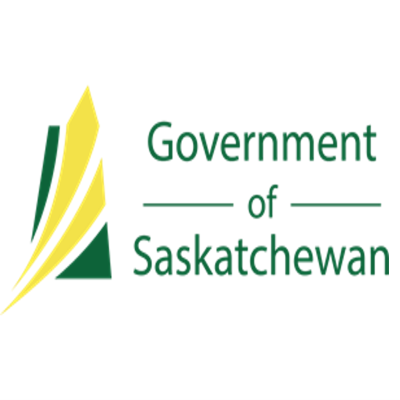ecoregion
Type of resources
Available actions
Topics
Keywords
Contact for the resource
Provided by
Formats
Representation types
Update frequencies
status
-

For most recent Ecological Land Classification data, see: https://data.novascotia.ca/d/q6zd-39t3 The Ecological Land Classification (ELC) for Nova Scotia provides a hierarchical mapping of the province's forest ecosystems into ecosections, ecodistricts and ecoregions. It includes interpretation of the dominant natural disturbance regimes and potential climax forests at the ecosection level.
-

The Ecological Land Classification (ELC version 2015) for Nova Scotia provides a hierarchical mapping of the province's forest ecosystems into ecosections, ecodistricts and ecoregions. It includes interpretation of the dominant natural disturbance regimes and potential climax forests at the ecosection level.
-

Land cover classification image for the Aspen Parkland ecoregion of Saskatchewan with a spatial resolution of 10m. The goal of this land cover classification was to distinguish native from tame grasslands. The classification was based on Sentinel-1 and Sentinel-2 imagery using machine learning analysis in the Google Earth Engine platform. The classification was conducted on imagery acquired in 2022, and the classification model was built with field data collected in 2020 - 2022. There are eight classes in total: native grassland, tame grassland, mixed/altered grassland, cropland, shrubs, trees, water, and urban area. Download: here The Prairie Landscape Inventory (PLI) aims to develop improved methods of assessing land cover and land use for conservation. Native grassland has historically been one of the hardest to map at-risk ecosystems because of the challenges in distinguishing native grassland from tame grassland land cover using remotely sensed imagery. This classification distinguishes native grassland from tame grassland and will provide valuable information for habitat suitability for native grassland species, identifying high biodiversity potential and invasion risk potential. The classification map has eight (8) classes: 1. Cropland This class represents all cultivated areas with crop commodities, including corn, pulse, soybeans, canola, grains, and summer-fallow. 2. Native grassland This class represents the native grassland areas that are composed of at least 75% native grass, sedge and forb species, such as the needle grasses and wheatgrasses along with June grass and blue grama grass. Unbroken grassland that is invaded by species like Kentucky bluegrass, crested wheatgrass or smooth brome, such that native cover is less than 75%, is not considered native for the purpose of this project. 3. Mixed/altered grassland This class represents a grassland with a mix of less than 75% native grass, sedge and forb species or less than 75% tame species. These are grassland areas that do not fit into either of the native or tame grassland definitions. 4. Tame grassland This class represents the tame grassland areas that are composed of at least 75% seeded or planted species with introduced grasses and forb species such as crested wheatgrass, smooth brome, Kentucky bluegrass, alfalfa, and sweet clover. 5. Water This class represents permanent water locations such as lakes and rivers. 6. Shrubs This class represents the sites dominated by woody vegetation of relatively low height (generally +/-2 meters) with shrub canopy typically >20% of total vegetation cover. 7. Trees This class represents the coniferous/deciduous trees, mixed-wood area, and other trees >2 meters height with tree canopy typically >20% of total vegetation cover. 9. Urban area This class represents both urban municipalities and buffered roads. Urban municipalities was used to mask the urban/developed area class of the Annual Crop Inventory 2021 (Agriculture Agri-Food Canada). Colour Classes: Value Label Red Green Blue 1 Cropland 255 255 190 2 Native grassland 168 168 0 3 Mixed/altered grassland 199 215 158 4 Tame grassland 245 202 122 5 Water 190 232 255 6 Shrubs 205 102 153 7 Trees 66 128 53 9 Urban area 128 128 128 Accuracy metrics This model has an overall accuracy of 73 per cent. The table below summarizes the user’s accuracy, producer’s accuracy, and F1-score of the model on the validation dataset. Class User’s accuracy (%) Producer’s accuracy (%) F1-score Cropland 91.2 94.5 0.93 Native grassland 74.8 73.1 0.74 Mixed grassland 44.7 44.1 0.44 Tame grassland 67.9 72.8 0.70 Water 94.8 91.3 0.93 Shrubs 61.2 51.1 0.56 Trees 89.7 94.6 0.92
-

Land cover classification image for the Cypress Upland ecoregion of Saskatchewan with a spatial resolution of 10m. The goal of this land cover classification was to distinguish native from tame grasslands. The classification was based on Sentinel-1 and Sentinel-2 imagery using machine learning analysis in the Google Earth Engine platform. The classification was conducted on imagery acquired in 2023, and the classification model was built with field data collected in 2023. There are seven classes in total: native grassland, tame grassland, cropland, shrubs, trees, water, and urban area. Download: here The Prairie Landscape Inventory (PLI) aims to develop improved methods of assessing land cover and land use for conservation. Native grassland has historically been one of the hardest to map at-risk ecosystems because of the challenges in distinguishing native grassland from tame grassland land cover using remotely sensed imagery. This classification distinguishes native grassland from tame grassland and will provide valuable information for habitat suitability for native grassland species, identifying high biodiversity potential and invasion risk potential. The classification map has seven (7) classes. The mixed grassland class included in the PLI land cover classification for other prairie ecoregions was not modelled in the Cypress Upland. 1. Cropland This class represents all cultivated areas with crop commodities, including corn, pulse, soybeans, canola, grains, and summer-fallow. 2. Native grassland This class represents the native grassland areas that are composed of at least 75% native grass, sedge and forb species, such as the needle grasses and wheatgrasses along with June grass and blue grama grass. Unbroken grassland that is invaded by species like Kentucky bluegrass, crested wheatgrass or smooth brome, such that native cover is less than 75%, is not considered native for the purpose of this project. 4. Tame grassland This class represents the tame grassland areas that are composed of at least 75% seeded or planted species with introduced grasses and forb species such as crested wheatgrass, smooth brome, Kentucky bluegrass, alfalfa, and sweet clover. 5. Water This class represents permanent water locations such as lakes and rivers. 6. Shrubs This class represents the sites dominated by woody vegetation of relatively low height (generally +/-2 meters) with shrub canopy typically >20% of total vegetation cover. 7. Trees This class represents the coniferous/deciduous trees, mixed-wood area, and other trees >2 meters height with tree canopy typically >20% of total vegetation cover. 9. Urban area This class represents both urban municipalities and buffered roads. Urban municipalities was used to mask the urban/developed area class of the Annual Crop Inventory 2021 (Agriculture Agri-Food Canada). Colour Classes: Value Label Red Green Blue 1 Cropland 255 255 190 2 Native grassland 168 168 0 4 Tame grassland 245 202 122 5 Water 190 232 255 6 Shrubs 205 102 153 7 Trees 66 128 53 9 Urban area 128 128 128 Accuracy metrics This model has an overall accuracy of 92 per cent. The table below summarizes the user’s accuracy, producer’s accuracy, and F1-score of the model on the validation dataset. Class User’s accuracy (%) Producer’s accuracy (%) F1-score Cropland 96 96 0.96 Native grassland 90 93 0.92 Tame grassland 93 71 0.82 Water 100 100 1.00 Shrubs 77 88 0.83 Trees 96 996 0.96
-

Land cover imagery for the moist mixed grassland ecoregion of Saskatchewan with a resolution of 10m. Classification was based on machine learning analysis and remote sensing data of Sentinel-1 and Sentinel-2 imagery in Google Earth Engine platform. The goal of this land cover was to distinguish native from tame grasslands, and is classified into several classes: native grassland, tame grassland, mixed grassland, cropland, woody plants, water, and urban area. Download: Here The Prairie Landscape Inventory (PLI) working team of Habitat Unit in the Fish and Wildlife Branch, Ministry of Environment aims to develop improved methods of assessing land cover and land use for conservation. Native grassland, in particular, has been one of the most hard to map at risk ecosystems because of difficulty for imagery classification methods to distinguish native from tame grasslands. Improved classification methods will provide valuable information for habitat suitability, identifying high biodiversity potential and invasion risk potential. The classification map has seven (7) classes: 1. Cropland This class represents all cultivated areas with crop commodities: corn, pulse, soybeans, canola, grains, summer-fallow. 2. Native grassland This class represents the native grassland areas of the Moist Mixed Grassland ecoregion, which are composed of at least 75% native grass species, such as the needle grasses, wheatgrasses along with June grass and blue grama grass. Also includes additional sedge species, forbs, and some non-vascular species. Unbroken grassland that is invaded by species like Kentucky bluegrass, crested wheatgrass or smooth brome, such that native cover is less than 75%, is not considered native for the purpose of this project. 3. Mixed grassland This class represent a heterogenic grassland with a mix of less than 75% native grass species or less than 75% tame species. 4. Tame grassland This class represents the tame grassland areas of the Moist Mixed Grassland ecoregion, which are composed of at least 75% seeded or planted species with introduced grasses and forb species such as crested wheatgrass, smooth brome, alfalfa, sweet clover. 5. Water This class represents permanent water locations such as lakes and rivers. 8. Woody plants This class represents the sites dominated by woody vegetation including shrubs and trees with typically more than 20% canopy cover. 9. Urban area This class was masked using urban/developed area class of the Annual Crop Inventory 2020 (Agriculture Agri-Food Canada), and limited within the urban municipality polygons. Colour Classes: Value Label Red Green Blue 1 Cropland 255 255 190 2 Native grassland 168 168 0 3 Mixed grassland 199 215 158 4 Tame grassland 245 202 122 5 Water 190 232 255 8 Woody plants 137 205 102 9 Urban area 128 128 128 Accuracy metrics This model has an overall accuracy of 70.3 per cent. The table below summarizes the user’s accuracy, producer’s accuracy, and F1-score of the model on the validation dataset. Class User’s accuracy (%) Producer’s accuracy (%) F1-score Cropland 74.7 87.1 0.81 Native grassland 61.7 78.3 0.69 Mixed grassland 57.7 26.1 0.36 Tame grassland 66.9 69.8 0.68 Water 96.3 84.4 0.90 Woody plants 81.1 73.2 0.77
-

Ecoregion - Seven New Brunswick Ecoregions delineate areas that are different with regard to climate (precipitation and temperature), based principally on elevation above sea level and marine influences. Ecodistrict - Ecodistricts are nested subdivisions of Ecoregions based on geomorphologic and lithologic differences. The correct way to quote an ecodistrict number is to quote both its ecoregion and ecodistrict numbers, separated by a dash, e.g.: 2-1 denotes the Upsalquitch Ecodistrict in the Northern Uplands Ecoregion. Ecosection - Ecosections are nested subdivisions of Ecoregions based on topographic and relief differences. The correct way to quote an ecosection number is to quote its ecoregion, ecodistrict, and ecosection numbers, each separated by a dash, e.g.: 2-1-3 denotes Ecosection 3 of the Upsalquitch Ecodistrict in the Northern Uplands Ecoregion. Ecosite - Ecosites capture individual landforms that in theory outline a single forest ecosystem type at the 1:50,000 mapping scale. They are more-or-less uniform with regard soil moisture regime, soil nutrient regime, and topoclimate. Within ecoregions, each ecosite may be presumed to have similar vegetation potential in terms of native species composition, forest cover type, and timber growth rate (although the situation on the ground often deviates from what is mapped due to mapping imprecision and/or vegetation disturbance). To most narrowly describe an ecosite’s landscape context, the correct way to label it is to quote its ecoregion, ecodistrict, ecosection, and ecosite numbers, each separated by a dash, e.g.: 2-1-3-7 denotes Ecosite 7 in Ecosection 3 of the Upsalquitch Ecodistrict (1) in the Northern Uplands Ecoregion (2). For more information, see Department of Natural Resources 2007. Our landscape heritage [electronic resource] : the story of ecological land classification in New Brunswick. General editor: Vincent F. Zelazny. -- 2nd ed.
-

An ecoregion is an area with major physiographic and minor macroclimatic or oceanographic variation. There are 43 ecoregion in British Columbia of which 39 are terrestrial. Ecodivsions are meant to be mapped at 1:500,000 for regional strategic planning
 Arctic SDI catalogue
Arctic SDI catalogue